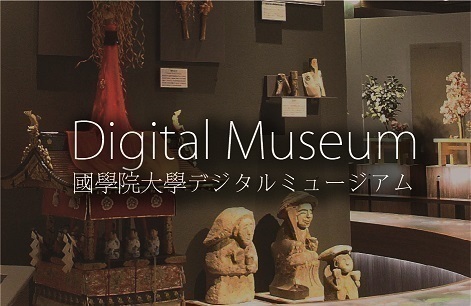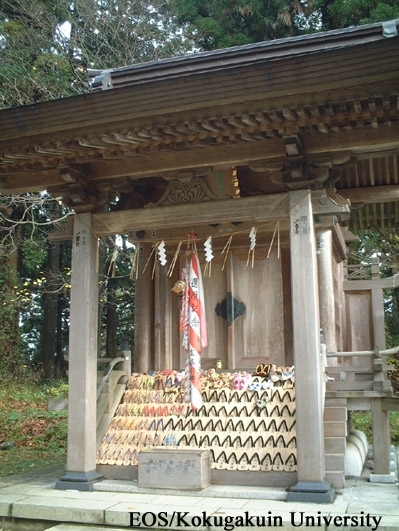Encyclopedia of Shinto
| Main Menu: | |
| Links: |
詳細表示 (Complete Article)
| カテゴリー1: | 6. Belief and Practice |
|---|---|
| カテゴリー2: | Divination and Supplication |
| Title | Hōnō |
| Text | The dedication of a votive object or the presentation of a performance with the aim of entreating Shinto and Buddhist deities through prayer or of expressing feelings such as gratitude to them. Together with practices that include praying at shrines and temples, visiting a temple to thank a deity for answering one's prayer (reimairi), observing dietary abstinence after praying for a divine favor (tachimono), and purification by cold water prior to prayer (mizugori), the practice of dedicating objects or performances to shrines and temples began in ancient times as an act of supplicating or thanking the deities. An act of hōnō may also aim at appeasing or entertaining deities. Among the wide variety of objects offered to deities, the most prominent offering is the votive tablet (ema). Though the ancient custom was to dedicate live horses, it was later replaced with the dedication of a "picture horse," that is, a wooden plaque on which is drawn a picture (e) of a horse (ma). Moreover, worshippers frequently wrote their prayers or words of thanks on the ema or dedicated ema with a picture representing the very thing being requested. Ema were thus used for every conceivable type of prayer and expression of thanks. In contrast, the choice of offering may also depend on the aim of the prayer. For example, a rock with a hole in its center, an awl, a needle, or similar object is offered when praying to be cured of poor hearing; sandals braided from straw are offered for feet ailments; and a ladle with its bottom removed is offered for easy childbirth. As shown by these examples, the votive offering is frequently chosen to explicitly or implicitly suggest the aim of prayer. One may borrow a previously dedicated votive offering for use as an amulet (gofu); when one's prayer has been answered, the votive offering may be doubled by dedicating the borrowed object together with a new one of the same kind. Other votive offerings may consist of personally composed songs (hōnōka); money offerings; food offerings (shinsen) or sake (miki) presented during a festival, ceremony, or other religious occasion; or the first fruits of a harvest. The dedication of artistic performances also takes various forms, such as "votive tournaments" (hōnō shiai) held to both entertain the deities and pray for advancement in one's craft; hōnō sumo matches held in appreciation for rainfall following a ritual praying for rain (amagoi), after a harvest, or for other grateful events; and hōnō kagura performed to drive away misfortune and illness and to bring good fortune. — Suzuki Kentarō |






